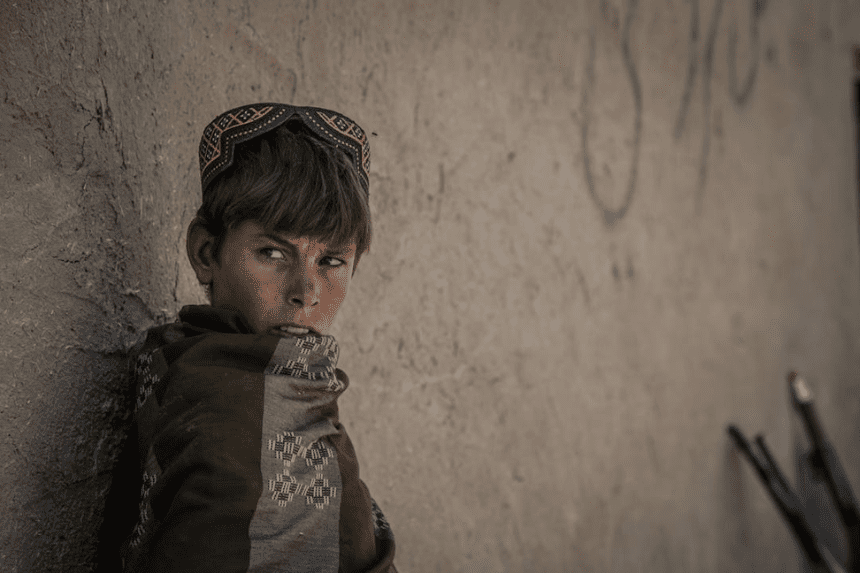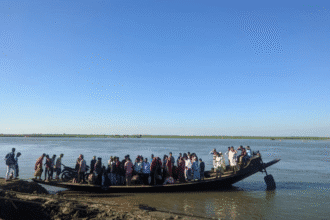Afghanistan’s hunger crisis is deepening, with a wave of children’s deaths, the destructive effects of widespread food insecurity, and the collapse of aid. In the Herat region, families like Ghulam Mohididin and his wife Nazo have lost all their children due to malnutrition – Hahmat, Cotton, and Faisal Ahmed, all are under two years old.
A similar tragedy is coming out across the country. Parents are unable to feed their children, healthcare systems are overwhelmed, and international assistance is disappearing. Humanitarian groups and health officials have warned that the situation is split in one of the most serious child hunger emergencies. Afghanistan has ever seen.
What Is Fueling the Afghanistan Hunger Crisis?
Multiple factors are driving the Afghanistan hunger crisis. A prolonged drought has devastated crop yields in over half the country’s provinces. At the same time, more than two million Afghans have been deported from Iran and Pakistan, cutting off critical remittances.
Aid cuts have worsened the problem. The U.S. and several other major donors have drastically reduced or halted support, largely due to ongoing sanctions and disagreements with the Taliban government over rights and governance. This reduction has directly impacted food distribution and nutrition programs, particularly for vulnerable children. Here is the link to our article on Humanitarian Crisis Deepens.
How Are Families Coping With Starvation?
Families across Afghanistan are resorting to desperate measures. In Sheidaee, a settlement near Herat, children are visibly malnourished. Many cannot walk or stand, even at two years old. In homes built from mud and clay, parents feed children tea-soaked bread when available. On other days, there is simply nothing.
In one case, a mother, Hanifa Sayedi, uses medication like Lorazepam and Propranolol—meant for adults—to sedate her baby so he can sleep through hunger. This practice is dangerous and potentially fatal, but parents say they feel they have no choice. “I feel suffocated… I should kill myself and my children,” Hanifa confesses, highlighting the desperation felt by many Afghan mothers.
Are Hospitals Seeing a Surge in Malnutrition Cases?
Hospitals are overwhelmed. In the northeast, Badakhshan regional hospital’s malnutrition ward had 26 children in just 12 beds. Infants like Sana, Musleha, and twins Mutehara and Maziyan were all critically ill due to severe malnutrition combined with other illnesses such as measles and diarrhea.
Despite treatment efforts, many do not survive. Just one week after being admitted, three babies in the ward had died. Medical staff are overworked and under-equipped. As funding disappears, clinics are forced to turn away the very patients who need care the most. Here is the link to our article on the Myanmar Earthquake Crisis.
What Are Humanitarian Agencies Saying?
The World Food Programme (WFP) warns that its humanitarian funding will run out by November. Without urgent financial support, millions will be left without food assistance just as Afghanistan enters a harsh winter.
A WFP hotline now receives frequent suicide-related calls from women unable to feed their children. Operators have had to be retrained to handle the emotional toll of such conversations. The agency says over three million Afghan children are now at risk of severe malnutrition and potential death.
What Is the Government Doing in Response?
Taliban officials blame international sanctions and aid restrictions for the crisis. They claim the government is providing support “within its capacity,” but the lack of international recognition, combined with policies restricting women from working for NGOs, has strained humanitarian operations even further.
The global community remains cautious. Sanctions remain in place, and donors are prioritizing other global crises. However, aid organizations emphasize that apolitical humanitarian assistance is vital to save lives, especially children who have no control over the nation’s politics.
Final Thoughts
Afghanistan’s hunger crisis is no longer a warning – this is a fatal reality. Loss of money, joint with the environment and political instability, is killing innocent people every day. As more food aid disappears near winter, millions of starvation are on the verge of starvation. Immediate international intervention is important to prevent further tragedy and protect your children -Afghanistan’s most vulnerable population.








